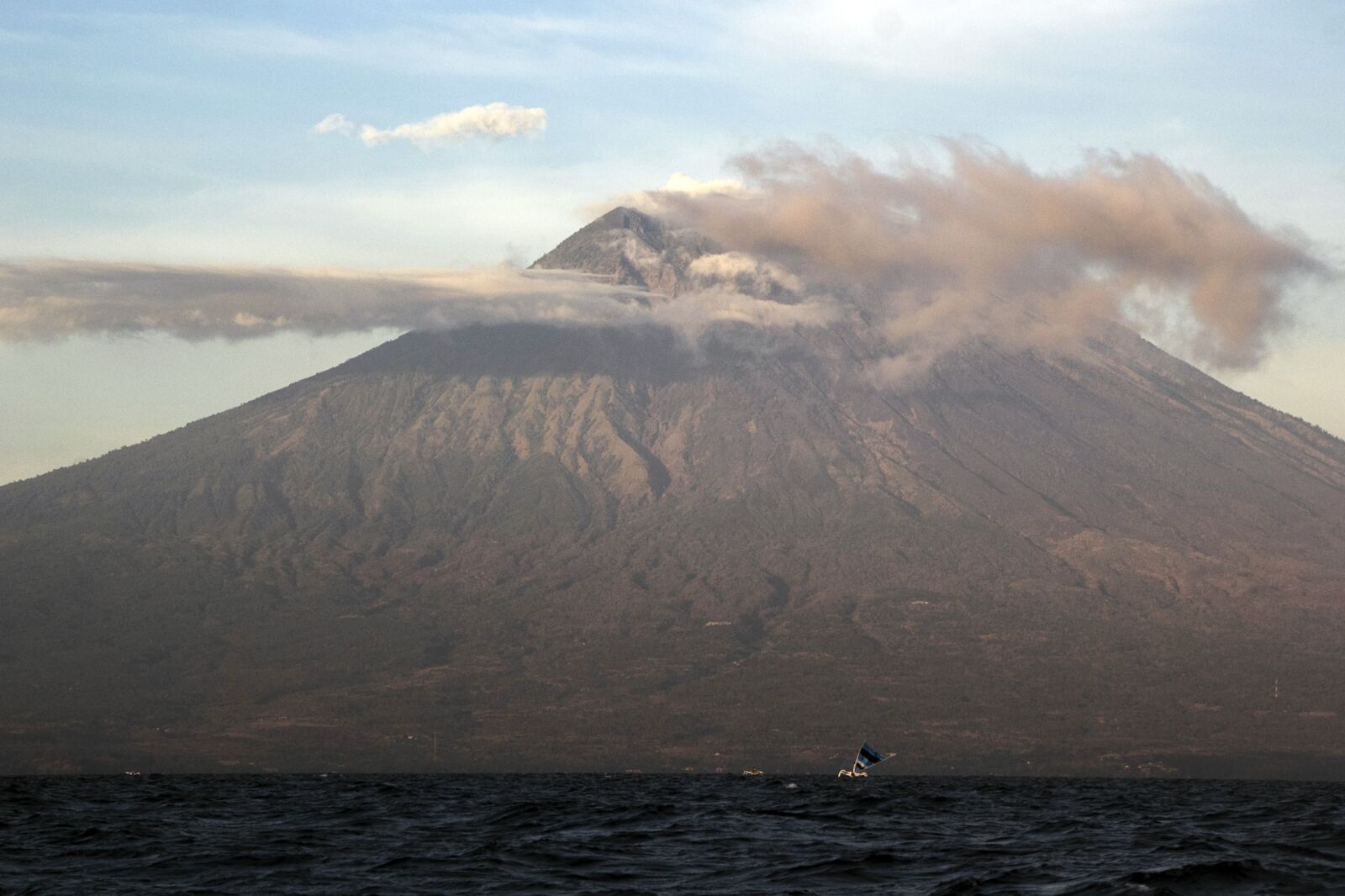begin quote from:
Mount
Agung, a volcano on Indonesia’s vacation island Bali, is expected to
erupt, sparking an exodus of more than 75,000 people from the area.
Agung’s murmurings threaten Bali’s …
Bali Tourism Under Threat as Volcano Agung Rouses
By and
From
1. What’s raising concerns?
Daily tremors from Mount Agung have volcanologists warning of a high probability it will blow. Authorities have mandated the evacuation of everyone living within 12 kilometers (7.5 miles) of the mountain. Agung is the highest peak on the island, and Balinese traditionally use the terms "seaward" and "mountainward" -- a reference to the volcano -- to convey direction in place of the terms north and south.
Mount Agung in Bali on Sept. 26.
Photographer: Barcroft Images via Getty Images
2. When did Agung last blow?
It erupted in 1963, throwing debris as high as 10 kilometers in the air, wrecking dozens of villages in a radius of about 7 kilometers and claiming more than 1,500 lives. Mudflows caused by heavy rainfall afterward killed an additional 200 people, and a second eruption three months later killed 200 more. Since then, the volcano has occasionally belched smoke and ash. Improved monitoring is expected to reduce the damage to life and property from future eruptions.3. What’s at stake economically?
Travel and tourism accounts for about 10 percent of Indonesia’s gross national product, and Bali is its most popular destination. Some 3.4 million foreign tourists visited the island between January and July this year. Indonesian officials say tourists are in no danger from Mount Agung, and there are ample attractions outside of the danger zone surrounding the volcano. But the great majority of visitors travel to and from Bali by air. Atmospheric ash from volcanic eruptions in other parts of Indonesia disrupted flights to Bali earlier this year, last year and in 2015. (Frequent fliers through Bali’s Denpasar airport include AirAsia, Garuda, Lion Air, Jetstar Airways and Singapore Airlines.) However, services that fly over Indonesia won’t be affected as carriers can divert their flight paths to avoid ash clouds.

An evacuation center in Klungkung regency, Bali on Sept. 25.
Photographer: Ulet Ifansasti/Getty Images
4. Was it always so?
In 1982, a British Airways 747 en route to Perth lost all four engines when it encountered ash from Indonesia’s Mount Galunggung. The plane fell for about 6 kilometers before the pilot was able to restart three engines and make an emergency landing in Jakarta. That and other similar incidents raised awareness of the perils of flying through volcanic ash, resulting in better tracking of ash clouds as well as equipment that can detect ash particles.5. How common are volcanoes in Indonesia?
The country, an archipelago of more than 13,000 islands, has the world’s largest number of historically active volcanoes: 78. Indonesia is located on the so-called Pacific Rim of Fire, an arc of volcanoes and geological fault lines surrounding the Pacific Basin. Two of the largest eruptions in the past 200 years occurred in Indonesia at Mount Tambora in 1815 and Krakatau in the Sunda Strait in 1883. In the 1919 eruption of Mount Kelud, more than 5,000 people were killed from gas and lava flows, showers of scalding water from the volcano’s crater lake and mudflows.The Reference Shelf
- The Smithsonian Institution’s Global Volcanism Program follows seismic activity at Agung.
- National Geographic explains the Ring of Fire.
- Flight data from CAPA Centre for Aviation.
- Bali tops TripAdvisor’s list of top 25 vacation destinations.
- The BBC recounts BA Flight 9 in 1982, when a 747 "effectively turned into a glider."
No comments:
Post a Comment